
The Importance Of Drawing For Children
Drawing is one of a child’s favourite activities, but it has so much more value for them than just making pretty pictures. Drawing helps children develop in so many different ways. Through drawing children learn and practice many foundational skills needed at school. It is a wonderful way for children to make sense of the world around them and boosts confidence and emotional intelligence. Here are just a few of the skills that are developed through drawing.
Fine Motor and Visual Skills
Drawing from a young age helps strengthen and fine-tune your child’s fine motor skills. Drawing helps develop hand eye co-ordination. When planning out their pictures children also learn about spatial awareness, size, distance as well as depth perception.
Problem Solving
When drawing, your child is able to express themselves creatively. It provides them the opportunity to ask and solve many questions such as which colour to use or where to place an object. They are also able to develop their picture through the creative process and can change and improve it as they go. Through making mistakes, they learn how to do things differently or how to include their mistake by changing it into something else to enhance their picture. Drawing also develops concentration and helps children to focus on working towards achieving a goal.
Imagination
Drawing helps your child awaken their creativity and imagination. It gives them the opportunity to express their creative thoughts on paper. It is also an important way of expressing and processing their feelings and emotions.
Confidence
As a parent you will have experienced the joy a child has sharing their finished pictures or artwork with others. Through drawing children make pictures that represent their thoughts, imagination and experiences which give them an immense sense of achievement. Children’s pictures are also a record of events that have happened. As they share these experiences with their loved ones, it is also an opportunity for them to bond and develop vocabulary and language skills. As their communication skills progress, it gives children more freedom and confidence during social interaction with others. Drawing also develops important pre-writing and pre-reading skills that translates to greater confidence when learning new skills at school.
As a parent it is important to encourage drawing. Here are some fun ideas to try at home:
- Draw with chalk on paving
- Think of a topic to draw about like a recent birthday party
- Ask your child to draw a picture, but include an object with a specific colour or letter sound
- Draw on black paper using pastels or chalk
- Read your child a story and ask them to draw their favourite part or a new ending to the story
- Draw a background to play with other toys on afterwards, like a home for Lego people, a farm for plastic animals or a town for cars (this is good for visual perspectives and spatial awareness)
- Draw on different surfaces like a chalk board or on the floor
- Trace around your child’s body and allow them to draw in the details of their faces, body parts and clothing
Most children draw something new every day and it is often the most precious gift they have to offer their loved ones. Wishing you many happy memories of drawing fun with your child at home.
Bronwen Nuthall
Reception Year Teacher
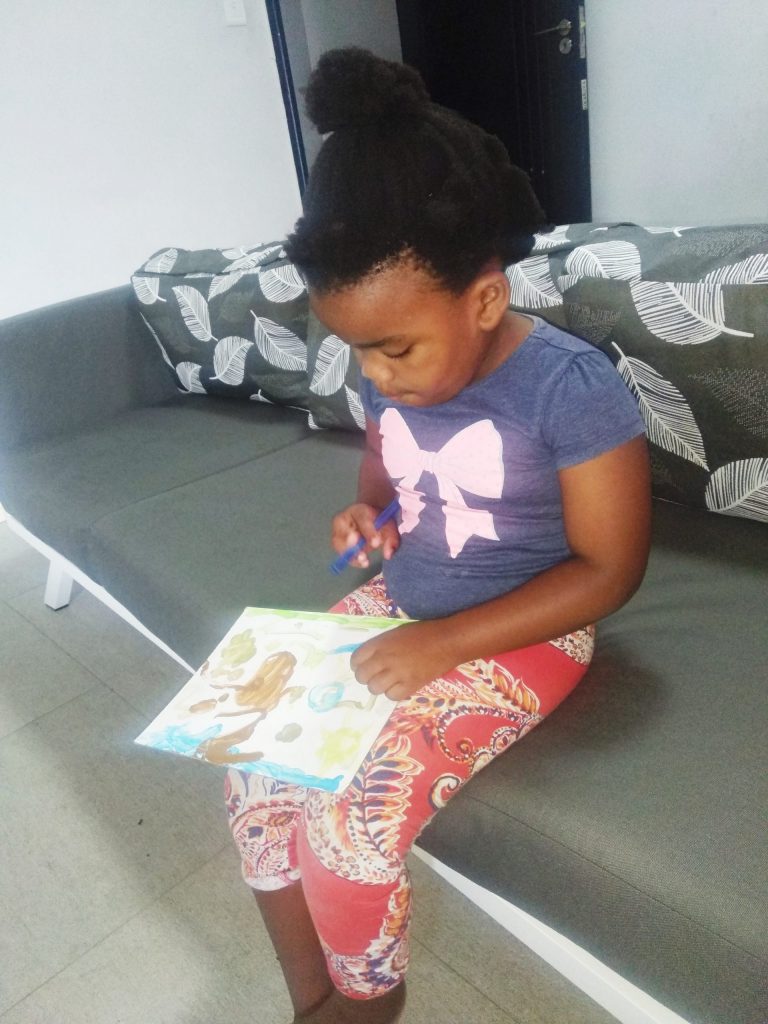
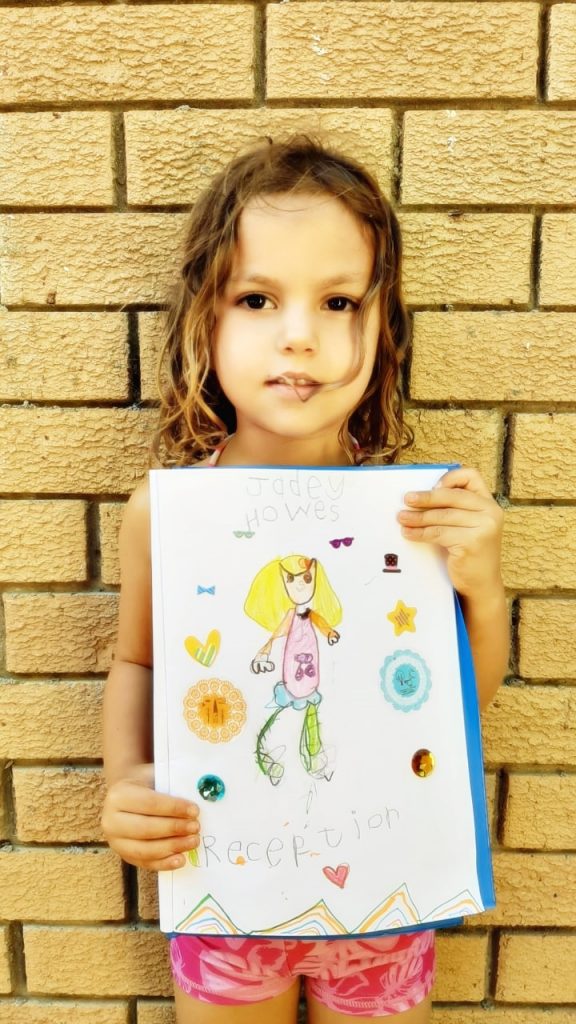
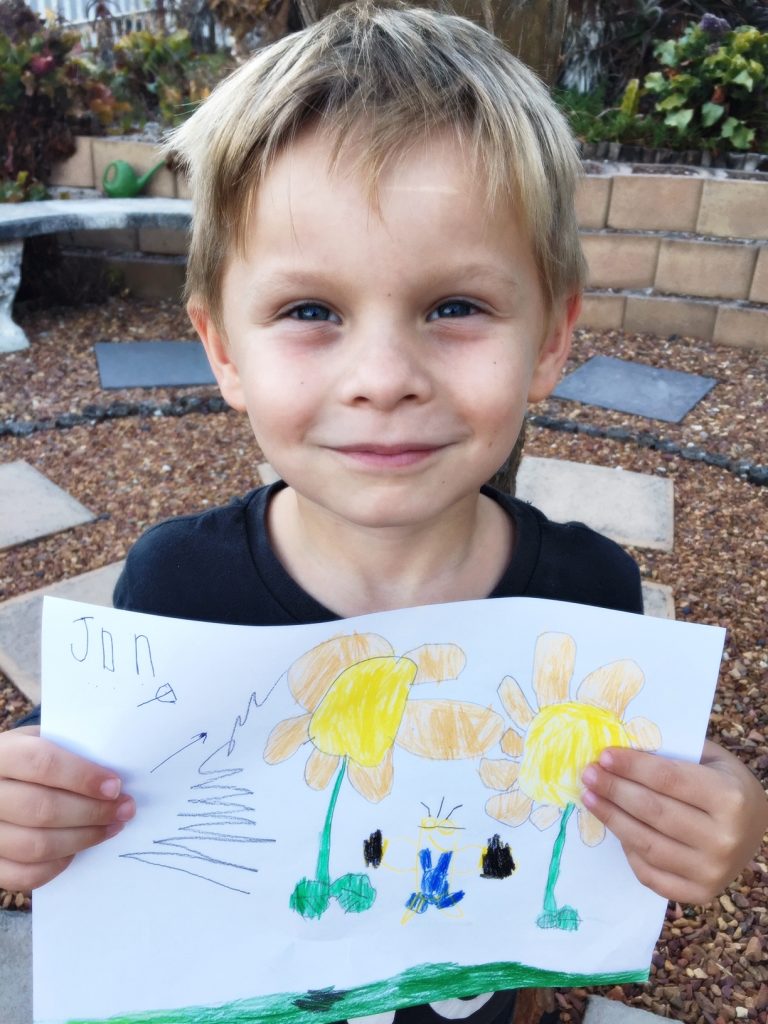
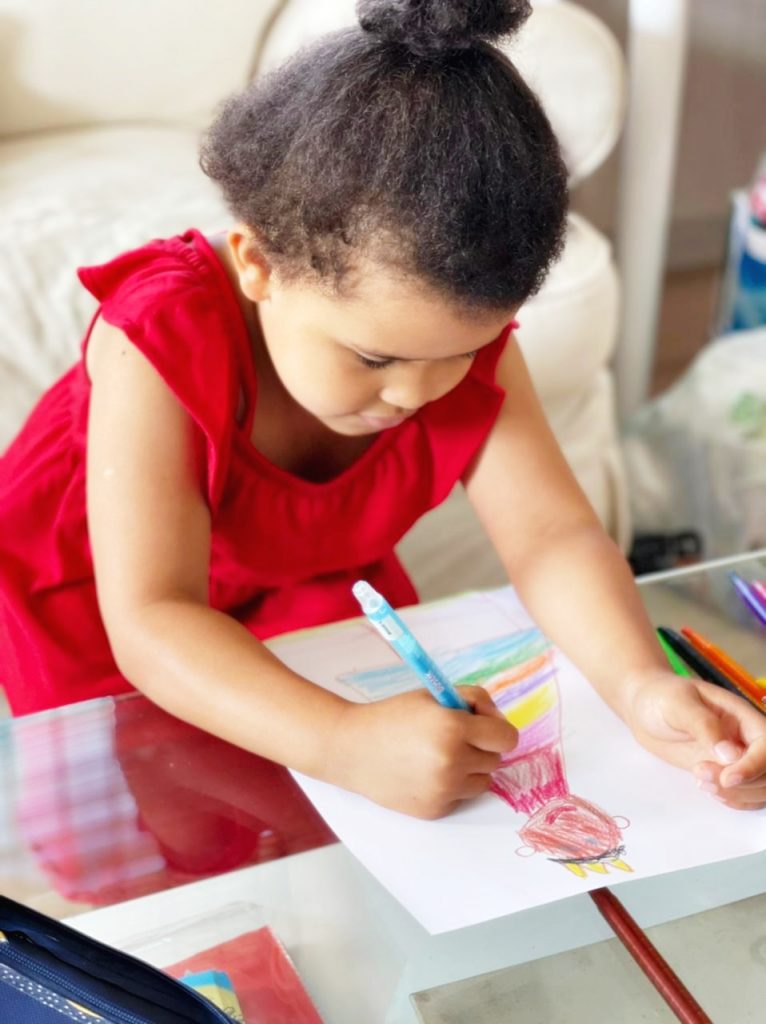
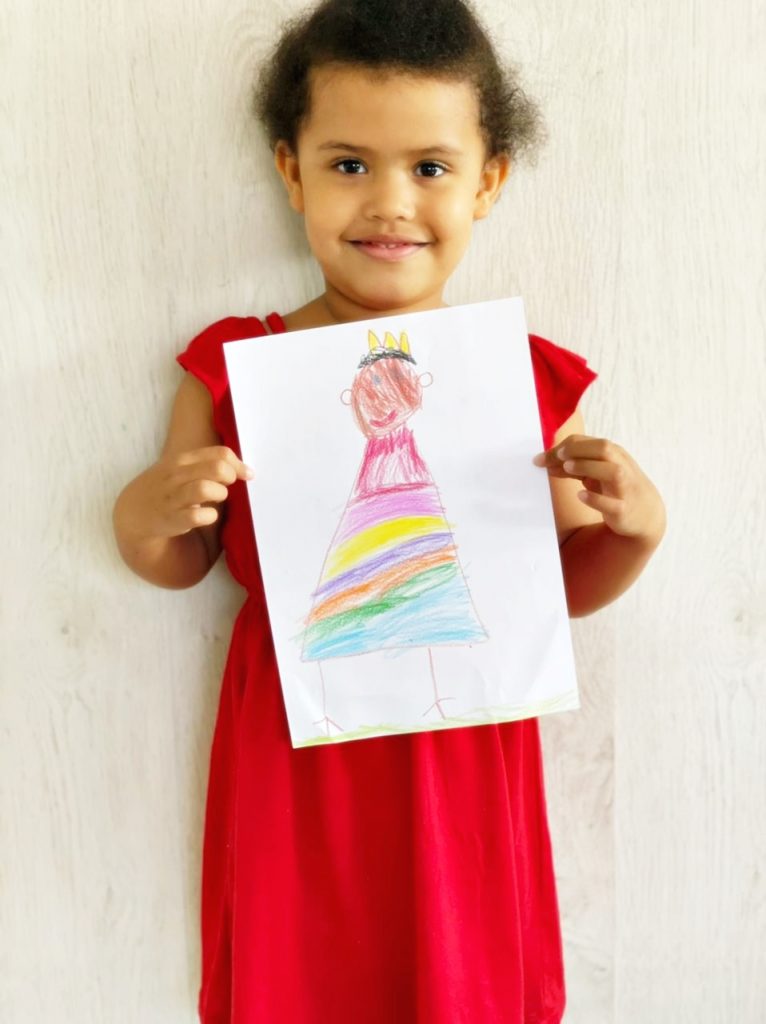

Rocks, Rocks and more Rocks!
The Year 2 students’ enthusiasm for their new Science topic, Rocks, is over-whelming. After the first lesson, where they learned the difference between Igneous, Sedimentary and Metamorphic rocks, they scoured the playground and surrounding areas for rocks during their break.
We tried to find the correct category for each specimen and then match them to their possible uses. A few students had found small pieces of limestone and the class was so surprised when they learned that chalk and talcum powder were made from limestone. This prompted many questions! ‘Which rock did our roof tiles start off as?’ ‘Which rock did my mom’s kitchen counter top start off as?’
We will be building on this knowledge for the last half of this term, and I am looking forward to investigating the marvels of Rocks with my class even further.
Kim Coetzer
Year 2 Teacher



The Importance of Mathematical Thinking
“To solve math problems, you need to know the basic mathematics before you can start.” – Catherine Asaro
One thing that I have reiterated to all my students over the years is to consider Mathematics as a way of thinking. Kaye Stacey (2012, University of Melbourne) submitted that mathematical thinking is important in three ways.
- Mathematical thinking is an important goal of schooling.
- Mathematical thinking is important as a way of learning mathematics.
- Mathematical thinking is important for teaching mathematics.
As students are introduced to high school Mathematics, it would be wonderful if many students could have just a small taste of the spirit of discovery of Mathematics as described in the quote below from the Mathematician Andrew Wiles.
“One enters the first room of the mansion and it’s dark. One stumbles around bumping into furniture, but gradually you learn where each piece of furniture is. Finally, after six months or so, you find the light switch, you turn it on, and suddenly it’s all illuminated. You can see exactly where you were. Then you move into the next room and spend another six months in the dark. So each of these breakthroughs, while sometimes they’re momentary, sometimes over a period of a day or two, they are the culmination of, and couldn’t exist without, the many months of stumbling around in the dark that precede them.” (Andrew Wiles 1997)
Because Mathematical thinking is a process, l will discuss examples of what l do every time and again with my students in and out of the classroom.
- Logical Puzzles
A logical puzzle is a problem that can be solved through deductive reasoning.
In class we have used this website many times and my students find Mathematics easy if engaged in an interactive and fun way. They start to enjoy how mystifying, puzzling and challenging it is.
- 4 x 4 Magic Square Puzzles

Magic Square Puzzle
In conclusion, math skills are about much more than all the minutiae we teach in school because they are a strong indicator of broader cognitive abilities. And because cognitive aptitude is one of the most predictive factors of job success, testing my candidates’ math abilities is a great way to assess their ability to succeed in any given Maths test and after school activities.
Hebert Tapfuma
High School Mathematics





Read More

Interactive Ways To Start Your Language Classes – Spanish Teaching Routines
“¡Hola amigos y amigas!”
This year, I am focusing on working with simple and effective resources to get the students into routines in Spanish class.
I believe that routines are essential for them to practice basic and simple expressions – every day, in a way that all our students can participate. Starting my lessons the same way, it helps students focus and start thinking and interacting in Spanish.
It takes time to establish a routine but once they get familiar with the vocabulary, the students can complete the tasks by themselves in less than 3 weeks.
The worksheet is designed to help students begin to understand themselves and be aware of how they are feeling each day (feelings), as well as what is going on around them. (The date, the season, the weather). It practices simple and practical language in a visual way that makes it accessible to the whole class.
To print less, I hand out a copy of the worksheet to students, at the beginning of the year, asking them to stick it on their notebook first page.
Then I use the projector in class to help them write down the same information in their notebook at the beginning of each lesson, especially at the beginning of the year.
I can say that I am very impressed with the positive impact that a solid beginning of the class routine creates, especially with the youngest students.
Having a repetitive start gives students the opportunity to settle in and feel comfortable with the change in language. It gives everyone in the class a chance to speak and sets the tone for the class.
In my classes, we start with general information (day, date, weather, feelings) and we will be adding more sections, especially in the last years of Primary school (express likes and dislikes, describe themselves).
It is important to note that I only see my classes once or twice per week, but they can still write down their routine in Spanish every day.
This is what I do at the beginning of class:
(It might take a few classes for students to master these basic routines but in 3 or 4 classes they will be familiarized with it and it will make the beginning of class smooth)
Routine 1 – Greetings.
I say, “Hola”
Students say, “hola”
Then I say, “buenos días” (good morning) or “buenas tardes” (good afternoon/evening)
Students say, “buenos días” or “buenas tardes”
Then I ask, “¿Cómo estáis?” (How are you?)
Students say, “bien. Gracias, ¿Y usted?” (Well. Thank you and you sir?)
I say “Bien. Gracias” “Well. Thank you.”
Routine 2 – Days of the Week – ¿Qué día es hoy?
I have a poster in the class with the days of the week, the months and colours (please see the photo)
The first week we sang the Spanish days of the week from Rockalingua, which the students will use later in a practical way to write down the date.
I ask, “¿Qué días es hoy?” (What or which day is today?)
I call on a volunteer and he or she says, “hoy es martes.” (Today is Tuesday)
I ask, “¿Qué día es mañana?” (Year 3 and 4) (What or which day is tomorrow?)
I call on another student that says “mañana es miércoles.” (Tomorrow is Wednesday)
I ask, “¿Qué día fue ayer?” (Year 5 and 6) (What or which day it was yesterday?)
Another student says, “ayer fue lunes.” (Yesterday was Monday)
Routine 3 – Months
We do the same thing that we did on routine 2 with the days of the week. We watch the months of the year song in Rockalingua. I ask “¿En qué mes estamos?” (Which month are we in now)
I call on a student and he or she says, “estamos en febrero.” (We are in February)
Routine 4 – Date
I ask “¿Quién me puede decir la fecha?” (Who can tell me the date?) I call on a student to say the date in a full sentence. For example, “hoy es viernes doce de febrero de dos mil veintiuno.” (Today is Friday, the 12th of February 2021.) I make sure the sentence is correct and then I have the whole class repeat.
Routine 5 – Feelings
“¿Cómo estás?” (How are you?) I ask the students how they feel today.
(I am tired.) Estoy cansado (masculine) or cansada (feminine)
(I am happy/well/not well.) Estoy feliz/bien/mal
Routine 6 – Weather
¿Qué tiempo hace hoy? (How is the weather today?)
I say, “mirad por la ventana” (Look out the window). I have students look out the window and I call on a volunteer to respond using a sentence about the weather. For example, “hoy hace sol” (Today it is sunny) “hoy está lloviendo,” (Today it is raining) etc. I use the Rockalingua song “¿Qué tiempo hace hoy?” about the weather in Spanish that contains vocabulary and grammar structures related to weather.
Routine 7 – Clothes
The students write down the clothes that they would like to wear according to the weather and have to choose a colour also for each clothing item. For example, (Today I am wearing a red dress or a blue t-shirt.) “Hoy llevo puesto un vestido rojo o una camiseta azul.”
I read the whole routine again for them and in a few minutes the students are speaking and interacting or at least getting compressible information in Spanish while they are reviewing basic and important topics, and most of the class is now focused on only one thing.
During the first lesson of the year, I hang out a copy of the beginning of the class routine (click here to view the document) and during the first 3 weeks we are filling in the document together to make sure that the students understand the vocabulary and time.
We also listen to all the Rockalingua songs that contain vocabulary and grammar structures related to this routine: the greetings songs, what’s your name, the feelings, the weather, so the students memorize the vocabulary in a fun and more effective way.
Javier Vidal
Spanish Teacher

Different Habitats
The Year 2 students have been learning many different facts about various animals and their habitats.
“The most important thing is to preserve the world we live in. Unless people understand and learn about our world, habitats, and animals, they won’t understand that if we don’t protect those habitats, we’ll eventually destroy ourselves.” – Jack Hanna
It is crucial that the Year 2 students learn about different habitats as they begin to understand the importance of both living and non-living things in a habitat. In learning this, students have learnt how plants and animals have adapted in order to thrive where they live. They have learnt that without the different habitats, we would not exist, therefore it is important for us to protect and appreciate the different habitats on Earth.
“We don’t own the planet Earth; we belong to it. And we must share it with our wildlife.” – Steve Irwin
Some fun facts we learnt:
-Wolves are part of the dog family.
-The blue whale is much louder than a jet, which only reaches 140 decibels.
-Koala Bears choose their habitat by the group of food trees.
-The Komodo Dragon can weigh up to 150 kilograms.
-Camels have long eyelashes to protect their eyes from sand.
Erin Hierse
Year 2 Teacher





New Techniques In Art
The past two weeks the Year 6 students have been learning how to shade and add depth to their Art. They started off creating their own value scales. Value scales consist of values ranging from white to black with several shades of gray between. These shades of gray help to create the illusion of depth and tone. Once completing their very own value scales, the Year 6’s went on to shade 3D shapes and add depth to their pictures using cross hatching, smooth shading and stippling.
Finally, they had to find a real life object, place it in front of them and draw what they saw, including all the shadows that fell on the object. The Year 6’s really impressed us with their art skills and followed the different techniques perfectly.
We look forward to seeing what they come up with in future art pieces.
Brittney Hakime
Year 6 Teacher





From the Principal’s Desk, 29th January 2021
Dear Parents
We have come to the end of another week which proved to be just as challenging for parents as for teachers. We are therefore grateful for your continued support of our school and educators.
A special mention is due to the PA members who assisted last Saturday morning in getting the students school supplies packed and organized for collection. These ladies were indispensable in having everything ready for collection during the rush on Saturday morning.
Your support and encouragement when collecting books was greatly appreciated. This is what makes Blouberg International a family and not just a school. A special thank you to Mrs. Izelle Williams, Mrs. Betsie Lott, Mrs. Nadine Romeikat, Mrs. Cheryl Muller and Mrs. Jaqueline De Wet. ‘Alone we can do so little, together we can do so much.’
Schooling for all year groups will resume on campus on Monday, 01 February 2021. Please remember that high school students are to use the gravel entrance and the primary school students, the main entrance. Siblings in different year groups may use the same entrance. Early care will be available from 07h00 and aftercare available till 18h00. Please remember to contact Mrs. Angelique Fraser on the aftercare line (064 625 9124) to arrange for collection of aftercare students.
It is important that you do not send any students to school who are showing any cold or flu symptoms. In the past, we have had to call parents to collect unwell students from school. To date we have been lucky not to have any reported positive cases amongst our students. Due diligence and adherence to protocols will allow us all to stay safe and well.
I wish you all a wonderful weekend. Stay safe and healthy.
Best regards
Edna
Read More
Teaching And Growing Young Minds
It has been an “out of the normal” sort of start to term 1, however it has been nothing short of fun and exciting.
As a teacher, these times are never easy. We are always worried about whether our students are receiving the tools they need to grow or getting enough of us as we try to stretch ourselves between numerous tasks. As daunting as it is to be teaching during a pandemic, it amazes me how strong and committed our students are. They remain eager to learn and excited for each new day. They never falter to take on a new challenge.
Today I tasked my students with a research activity and before I could guide them on which search engines to use or how to go about starting their research they were already absorbed in the activity and enthusiastically writing down facts. They were guiding each other and sharing advice with their peers. I was so proud as I watched them and listened to the helpful chatter that filled the classroom. Except for the masks and distance between each student teaching and learning continued.
This reminded me that as teachers we are changing the world and we do make a difference. To be able to keep your classroom running as normal when you are still trying to figure out what the ‘new normal’ is and to see the little faces of eager students that excitedly walk through the door each morning wanting to learn and then actually partaking of the knowledge you have to give is remarkable. We can all take from that, that we are making a difference. Pandemic or not, we are still doing what we love… TEACHING and GROWING young minds.
Nadia Mahomed
Year 5 Teacher





Necessity Is The Mother Of All Invention – (Plato)
We all know children love and need to play. During these trying times, break times are not as much fun as they used to be. Wearing masks in this heat, social distancing, etc. are not conducive to an exciting playtime for young children.
The same can be said for ‘free time’ in the classroom. Getting together in groups playing card games, or building Lego together is just not an option. Drawing a picture or colouring in can become pretty boring. Some students in my class decided to make paper jets, which was a good idea, until ducking flying objects became a hazardous situation, not to mention a distraction to students still completing work.
But, as Plato said, necessity IS the mother of invention. Last week, I observed some students taking to the field, flying their paper jets, and having races! I really was impressed at how these young minds saw a problem and created their own solution. They had so much fun, that this has become the norm most break times.
Kim Coetzer
Year 2 Teacher




Read More

Pre-Reception And Nursery – All About Me And My Family!
The Pre-Reception and Nursery students are starting to settle in beautifully into the class routine. This week we are learning about “All about me and my family”. The theme is to help children learn about each other and each other’s families and to realize that every person is unique and special. All our activities help them get to know the special and unique things about themselves and each other.
During creative activities we painted hands to make their handprints to decorate their art files and to see that all their hands and finger prints are different. The students were also encouraged to build their houses out of blocks. Circle Time was used to learn about the social skills of being together as a group and to learn more about the theme.
All our activities are centered around the theme the students are really having fun learning about themselves, their little friends and their families!
Cindy Nunan
Pre-Reception & Nursery Teacher



